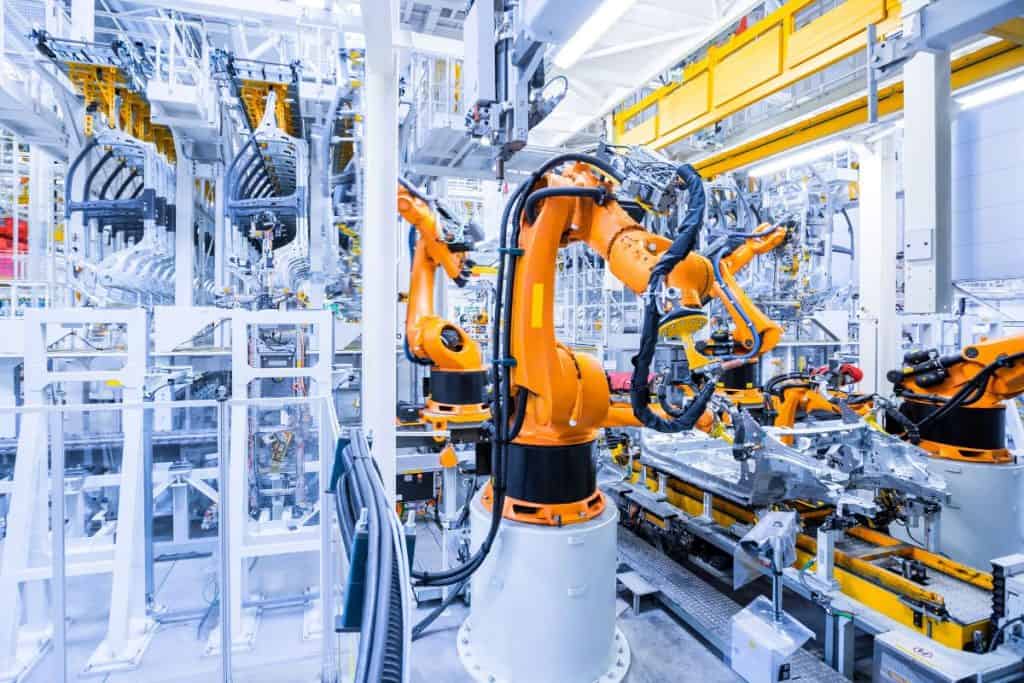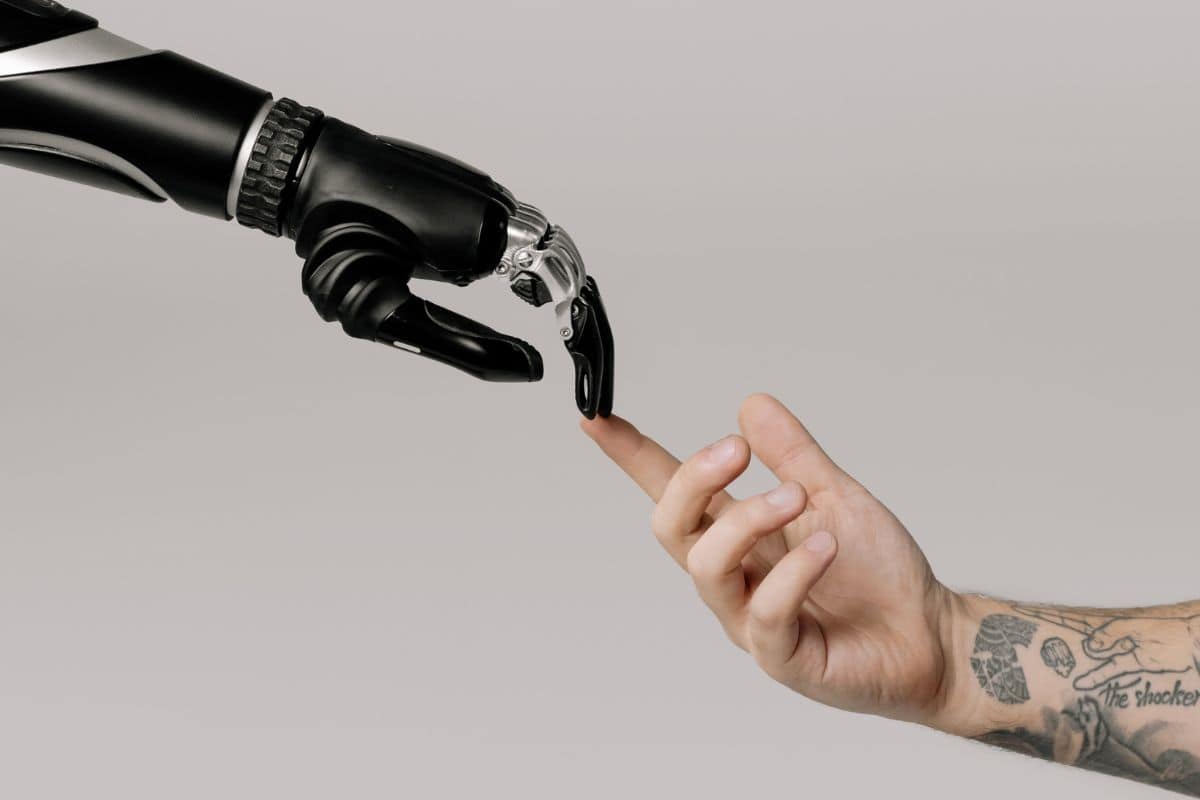TL;DR
Automation is transforming the job market, displacing routine roles while creating millions of new opportunities that demand higher-level skills. Sectors like manufacturing, healthcare, and transport are evolving rapidly, and adaptability is key. Lifelong learning, upskilling, and affordable education are crucial to navigating this shift. With proactive strategies, both workers and businesses can thrive in an increasingly automated world.
Table of Contents
Imagine a world where robots are not just a futuristic fantasy, but a pivotal part of daily operations in nearly every industry. Automation has rapidly evolved from mere machinery to indispensable technology, quietly reshaping the job landscape. As businesses strive for efficiency, the roles we once deemed irreplaceable are being transformed, posing both challenges and opportunities.
Automation's reach is vast, encompassing sectors like manufacturing logistics, healthcare innovations, and even the creativity-driven arenas of art and media. This new wave of technological advancement is prompting a crucial reevaluation of job roles across the board, with some roles facing obsolescence while entirely new opportunities emerge. The impact is multifaceted, influencing economic structures and labor dynamics in unprecedented ways.
The Evolution of Automation in the Workplace
Automation is transforming the workplace rapidly. Industries are embracing automation technologies, from artificial intelligence to industrial robots. The impact on employment is mixed, with both benefits and challenges.
Key Facts
- Economic Growth: According to the McKinsey Global Institute, automation boosts global productivity, potentially adding $3.5 trillion in value by 2030.
- Job Market Shift: The World Economic Forum projects 85 million jobs will be displaced by 2025. However, 97 million new roles will emerge, marking a net gain of 12 million jobs globally.
- Industry Impact: Sectors like healthcare and professional services, once considered immune, are now affected by automation.
- Local Employment Effects: Introducing one robot per thousand workers reduces regional employment by about six workers, highlighting some negative impacts.
- New Job Creation: Automation spurs growth in new fields, like IT roles and app development, showcasing its positive impact.
Skills for the Future
To thrive in this evolving landscape, workers need to focus on critical thinking, soft skills, and lifelong learning. Automation alters routine and manual tasks, pushing workers to develop specialized and technical skills to stay relevant in the changing labor market.
The Impact of Automation on Different Sectors
Automation is a significant force reshaping multiple sectors around the globe. Its influence is not uniform; it varies from one industry to another. Automation brings efficiency and productivity, but it also raises concerns about job displacement and income inequality.
Understanding these impacts allows industries to implement strategies that help their workforce adapt through training and reskilling. As technology evolves, it is crucial for policymakers and businesses to address the diverse effects of automation.
By doing so, they can ensure that this transformation results in sustained economic growth and new employment opportunities while minimizing the negative consequences.
Manufacturing

In manufacturing, automation has revolutionized how products are made. Industrial robots have increased efficiency by reducing errors and boosting output. For instance, robot sales rose by 11% in 2020, reaching 373,000 units. This uptick in automation is driven by decreasing robotic costs and technological gains. Many repetitive tasks, like assembly line work, are now automated, leading to cost savings and quicker product delivery to market.
While automation cuts costs for manufacturers, it also necessitates that workers develop more specialized skills to operate or maintain these advanced machines and ensure they remain competitive in the labor market.
Food Service
The food service industry, especially fast-food, is increasingly using automation to improve service efficiency. Customers now place orders and pay through computer systems, which saves time. Automated machines are taking on repetitive tasks like food prep and dishwashing. Despite this trend, jobs requiring interpersonal skills and creativity, such as chefs in fine dining, remain filled by humans.
Although past forecasts expected automation to cut fast-food jobs, actual growth has exceeded predictions, reflecting the ongoing demand for roles that machines cannot yet fully replicate. The industry thus manages a balance between automated convenience and human-driven quality service.

Transportation
Automation in transportation is bringing significant changes. Advanced robotics and AI are expected to lead to job losses, particularly for vehicle drivers.
Historically, the transportation sector has seen technology impact wages, such as pilots earning more for risky night flights. Automation presents challenges like worker dislocation and increased inequality. It affects not only traditional roles but also standards within the industry.
As automation progresses, transport companies will need to focus on retraining and reskilling workers to transition into new roles. The sector must adapt to ensure workers are prepared for a future where technology plays a larger role.
Healthcare
Automation is transforming healthcare, primarily through robotic process automation (RPA). These systems cut administrative processing times by 40-80%, giving healthcare professionals more time for patient care. Reducing administrative workload thanks to RPA improves documentation accuracy and efficiency. This change allows staff to concentrate more on patient interaction, enhancing the quality of care.
Automation thus aids better patient outcomes by freeing up healthcare workers. It also helps shift job roles towards more meaningful tasks that prioritize patient well-being. As technology continues to evolve, healthcare professionals must be ready to embrace new roles and skills for improved care delivery.
Creative Industries
Creative industries remain largely protected from full automation. Creativity is a complex trait, deeply tied to human psychology and external influences. It involves unique talents that machines currently struggle to emulate. Supportive environments and inspiration are key to nurturing creativity.
While machines may take decades to replicate human creativity, creative jobs, such as those in marketing, are in less danger of full automation. This is because they depend heavily on creativity-driven initiatives.
As automation grows in other sectors, the creative industry continues to thrive on its human creativity advantage, serving as a complement rather than a replacement.
Potential Job Displacement and Creation
Automation is changing the way we work. Machines and technology are taking over tasks once done by people, especially in places like factories and customer service. This can lead to job loss for some, particularly in jobs that pay well, like those in manufacturing. As manufacturing jobs are replaced by robots, there may be a ripple effect, reducing demand for other jobs in retail and service sectors. On the other hand, automation isn't just about taking away jobs; it's also about creating new ones. Many of these new jobs require advanced skills, such as understanding and working with data, or designing software.
As lower-value jobs decrease, there's a need for people to upgrade their skills. Policymakers and businesses need to focus on education and training. This will help workers meet the demands of these new roles and ensure a smoother transition into the future of employment.
Jobs at Risk
According to an Oxford study, nearly half of the analyzed jobs are at risk due to automation. Jobs that involve doing the same tasks repeatedly or those that don't require much creativity are the most at risk.
Sectors like transportation, logistics, and office administration are among the first to feel the impact of automation. These fields often perform routine tasks, making them easy targets for automation technologies.
The service, sales, and construction sectors also face a high chance of being affected. Some jobs within these categories might be less affected than others, but many will see significant changes. Automation on employment will likely be uneven, meaning that while some roles may disappear, others may stay or adapt. This makes it crucial to recognize which jobs are most susceptible and to plan for shifts in the workforce.
Emerging Opportunities
Despite the concerns about job displacement, automation presents new opportunities. By 2025, it's expected to create 97 million new roles. This means a net gain of 12 million jobs globally, offsetting losses in other areas. Most organizations are planning to integrate automation technologies in the near future, and this could expand growth in this sector significantly.
Automation can drive economic growth, adding $3.5 trillion in value by 2030 through productivity gains. This shift allows human workers to focus on tasks that require creativity and critical thinking. It highlights the need for a workforce skilled in both technical and soft skills. As more businesses adopt digital technologies, workers must adapt and learn new skills. This presents a chance for individuals to align with the evolving job market and prepare for roles that are not just repetitive, but dynamic and fulfilling.
Concerns and Benefits of Automation
Automation has become a pivotal force in reshaping the job market. It leverages technology across various industries to streamline processes, reduce costs, and improve efficiency. This shift, while holding significant potential for economic growth, also presents mixed impacts on worker well-being. On the one hand, automation can reduce stress by eliminating routine and monotonous tasks. On the other hand, it may worsen health and job satisfaction, especially for those in roles susceptible to automation.
While automation leads to some job displacement, new job opportunities often emerge in other sectors, enhancing job quality and opening paths for growth. In human resource functions, AI improves efficiency but raises concerns about algorithmic bias and the need for human oversight.
Economic Implications
Automation is poised to boost economic growth by driving productivity and reducing costs. Yet, if not managed well, it could lead to unemployment and income inequality.
Automation streamlines tasks, increases output, and cuts costs, encouraging consumer spending. In turn, this can create new jobs and influence broader economic trends. Policies like workforce training and reskilling are crucial to offset negative economic impacts.
Though some jobs may vanish, automation can improve work quality by removing dangerous tasks, ultimately enhancing productivity. However, inequality may rise as clerical and production jobs decline, necessitating strategic plans to nurture a balanced economy.
Labor Market Dynamics
As automation advances, the job market is expected to evolve, potentially automating up to 800 million jobs by 2030. This transformation demands significant upskilling and adaptation from the current workforce.
Many workers are concerned about job security, with 37% worried about job loss due to automation. Despite these fears, projections from the World Economic Forum suggest a net positive job creation, with 133 million new jobs expected to counterbalance the 75 million jobs displaced. Automation enhances productivity and reduces consumer costs, but it also creates labor market inequality by displacing workers in machine-replaceable roles. Some fields, like data science and analytics, are thriving, demonstrating the varied impact of automation across different occupations.
The Importance of Reskilling and Education
As automation continues to advance, reskilling and education have become crucial for workers to adapt. Automation impacts roles by changing what skills are needed.
Investing in education equips workers to take on new, more complex roles. Training programs foster lifelong learning, helping workers remain competitive. This is vital for economic growth and reducing inequality. Industries like healthcare and manufacturing face rapid changes due to automation technologies.
High-quality training is needed to keep up. Collaboration with academic institutions creates pathways aligned with new technologies. Accessible learning options, like online courses, help workers continue to build skills. This is key for adapting to a fast-changing job market.
The Role of Affordable Education
Affordable education programs are vital in helping individuals adapt to the challenges posed by automation. These programs offer reskilling and upskilling opportunities with reduced financial burdens. This accessibility allows underrepresented groups to participate effectively in an economy influenced by automation. Pursuing degrees from affordable institutions in fields like IT and healthcare helps individuals meet the demands of an automated job market.
Flexible learning options are a part of these affordable education pathways. They integrate both technical skills and soft skills, like creativity and emotional intelligence. Such skills are resilient to automation, ensuring that individuals have well-rounded capabilities. By promoting social mobility, affordable education fosters economic competitiveness. This enables a wider audience to achieve long-term employability in roles less susceptible to automation, thus supporting a more inclusive workforce.
Specialized Training Programs
Specialized training programs offer essential skills to navigate an automated workforce. Educational institutions should focus on STEM fields to prepare students for future demands. These programs cater to high-growth jobs less likely to be automated, ensuring workforce development. Specialized training includes digital literacy, such as coding and data analysis, which are crucial for careers in the digital economy.
Industry-recognized credentials are key components of these programs. They prepare workers for quality jobs in an automated workforce. Programs that provide wraparound services, like childcare support, help workers access training more effectively. Financial support is also crucial, ensuring that training is accessible to all, regardless of personal circumstances. This comprehensive approach promotes workforce readiness in an ever-evolving job landscape.
Policy and Regulation in an Automated Era
In today's rapidly evolving world, automation and artificial intelligence (AI) are reshaping the job market. Policymakers are stepping up to address the impact on employment by focusing on education and training. They aim to up-skill and re-skill workers who might be affected by automation. The emphasis is on creating new jobs to counteract potential job displacement.
Discussions often highlight the potential for technology to enhance rather than replace human tasks. Policymakers are also considering demographic factors such as race, gender, and education level. Understanding the nature of tasks and technological capabilities helps shape effective regulatory responses.
Government Initiatives
Government initiatives are playing a crucial role in fostering a smooth transition amid increasing automation. By collaborating with educational institutions and private companies, they ensure workforce skills align with market demands. Regulatory frameworks advocate for affordable retraining initiatives. This approach helps workers gain specialized skills needed in a technology-driven job market.
The government is investing strategically in digital infrastructure and subsidies to create a resilient labor market.
Additionally, public investment in AI research is recommended to develop technologies that complement human abilities. These efforts demonstrate a commitment to promoting economic growth while safeguarding human workers.
Corporate Responsibility
Corporate responsibility is vital in addressing automation's challenges and harnessing its opportunities. Businesses must engage in transparent discussions with policymakers to understand different impacts across industries. They are encouraged to develop workforce training and reskilling programs. These initiatives aim to reduce job displacement due to automation technologies.
Companies that implement these strategies help prevent unemployment and inequality, promoting a balanced job market. Understanding social, technical, and biological dynamics is key to responsible automation and AI use. By doing so, corporations contribute to a sustainable and inclusive workforce future.
Strategies for Workforce Transition
The rise of automation and digital technologies is changing job markets. Many roles are becoming automated, meaning workers need new skills to stay employed. Companies and industries are facing this change by investing in training programs that focus on digital skills, AI, and data analytics. Upskilling and reskilling employees help them transition to more technical roles. These roles are less likely to be affected by automation.

Encouraging creativity, critical thinking, and innovation in the workplace helps workers find opportunities where machines fall short. High-quality training in sectors like healthcare, manufacturing, and retail logistics can improve employability.
Preparing the workforce for a rapidly evolving job market requires re-skilling initiatives and lifelong learning programs.
Managing Transitions
Businesses and industries are taking active steps to manage the shift toward automation by upskilling and reskilling employees. This strategy helps workers adapt to more technical roles. Developing educational paths that include both technical and soft skills is essential. This approach ensures that workers are prepared for jobs less impacted by automation.
Collaboration between public and private sectors is critical in managing this transition. A digital and knowledge-based economy needs a workforce skilled in these areas. Proactive education and training initiatives play a key role in easing workers into new roles. As automation becomes more common, adapting to new roles and processes is vital. Strategic efforts by policymakers and businesses are needed to address the challenges posed by automation. These efforts are necessary for creating a sustainable and inclusive job market.
Supporting Workers
Supporting workers in the face of automation requires coordinated efforts by governments and organizations. They are creating policies to lessen job displacement's negative impacts. These policies include workforce training and reskilling programs.
Training initiatives should focus on high-demand skills that aren't easily automated. This focus increases workers' adaptability and helps them secure employment. Building on existing worker skills and earning industry-recognized credentials enhances training programs' success.
Securing high-quality jobs is a prime goal of these efforts. Providing wraparound services, such as childcare and financial support, can help workers access needed training. However, these services' costs remain a challenge to widespread implementation. The effectiveness of worker support through automation transitions depends on how well individuals, organizations, and governments adapt.
With technological progress driving changes in the labor market, adaptation is critical. By focusing on these strategies, we can support workers and prepare them for a future shaped by automation technologies.
Case Studies: Success Stories and Lessons Learned
In Northern England, community-focused training centers have created customized reskilling programs for workers affected by automation in manufacturing and warehousing. The collaboration between governments, educational institutions, and private companies plays a crucial role. This effort has smoothed workforce transitions and supported economic growth.
Dutch organizations also shine in this area. They work with universities and training providers to keep educational content relevant. This approach equips both students and existing workers with skills needed for future job opportunities.
Key lessons from these success stories include:
- Reskilling Programs: Tailored training helps workers transition to new roles.
- Continuous Learning: A focus on lifelong learning ensures adaptability.
- Localized Training: Aligning education with regional job market needs fosters a skilled workforce.
The impact of automation can be mitigated by proactive strategies. Reskilling, continuous learning, and adaptable education are critical for tackling changes in labor markets. By focusing on these areas, regions can better manage automation's impact on employment and create positive outcomes for human workers.

